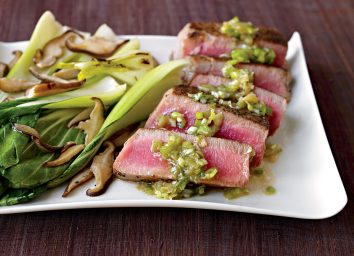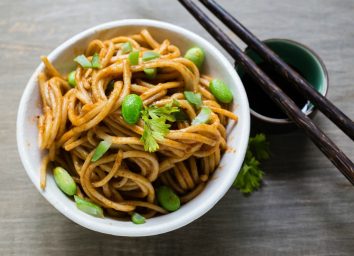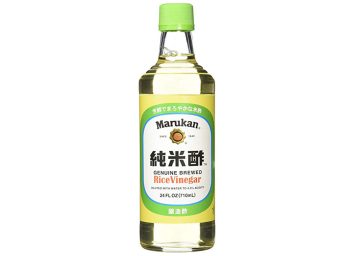The Spicy Green Stuff That Comes With Your Sushi Isn't Real Wasabi
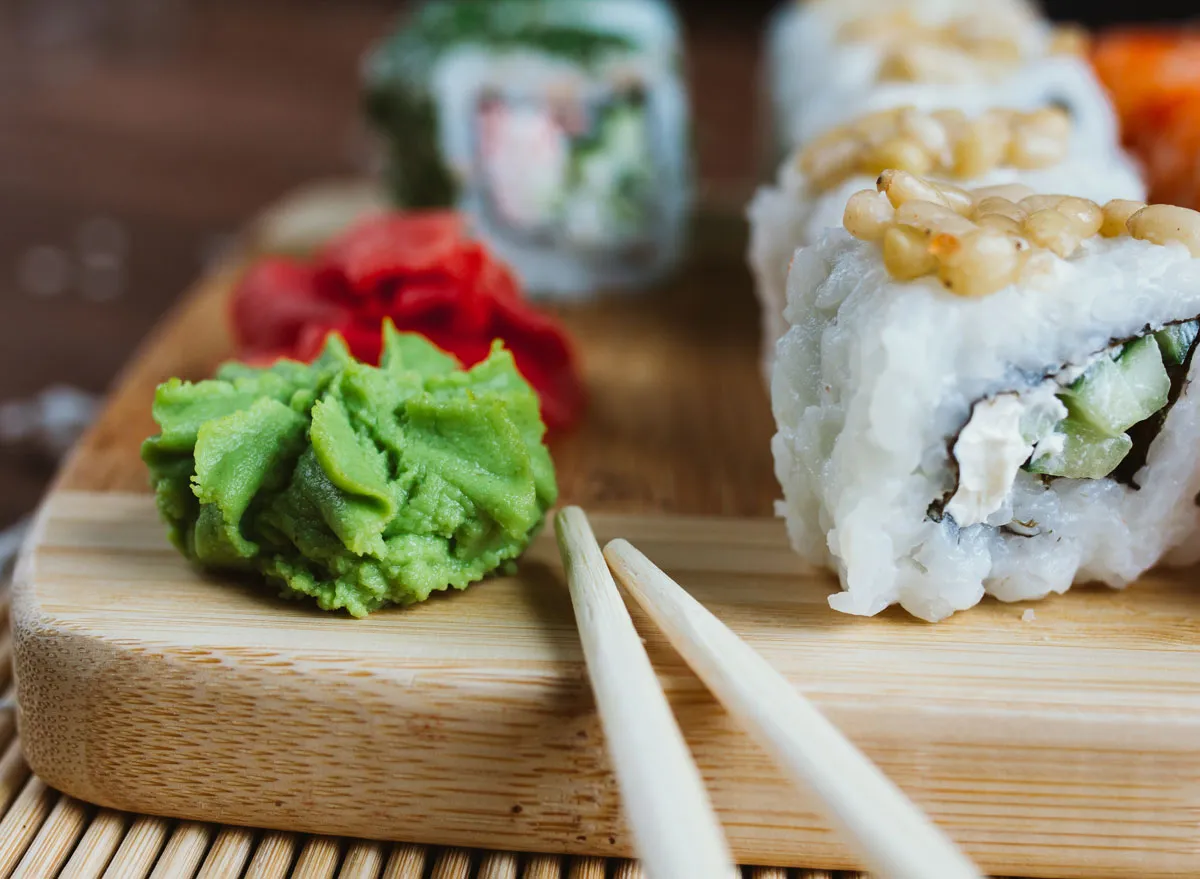
Sushi joint frequenters either love or hate the spicy accouterments their rolls are served with. If you're anything like us—true wasabi and ginger fans—you likely fall into two pools. Either you portion out a small bead of the green paste and slather it onto spicy tuna, or you stir the chunk of wasabi into the soy sauce dish to upgrade your dip. Whichever way you prefer to spice things up, you'll want to know that the green stuff that comes with your sushi isn't real wasabi. Yes, you read that right.
To help us demystify what most sushi restaurants use in place of real wasabi, we spoke to Ce Bian, the Executive Chef at Robata Japanese restaurant Roka Akor (which serves the real stuff!). We also enlisted the help of Maya Feller, MS, RD, CDN of Maya Feller Nutrition, a registered dietitian nutritionist on the Eat This, Not That! Advisory Board, to get the nutritional lowdown on this mysterious paste. Read on to find out exactly what you're pairing your sushi with.
What is real wasabi?
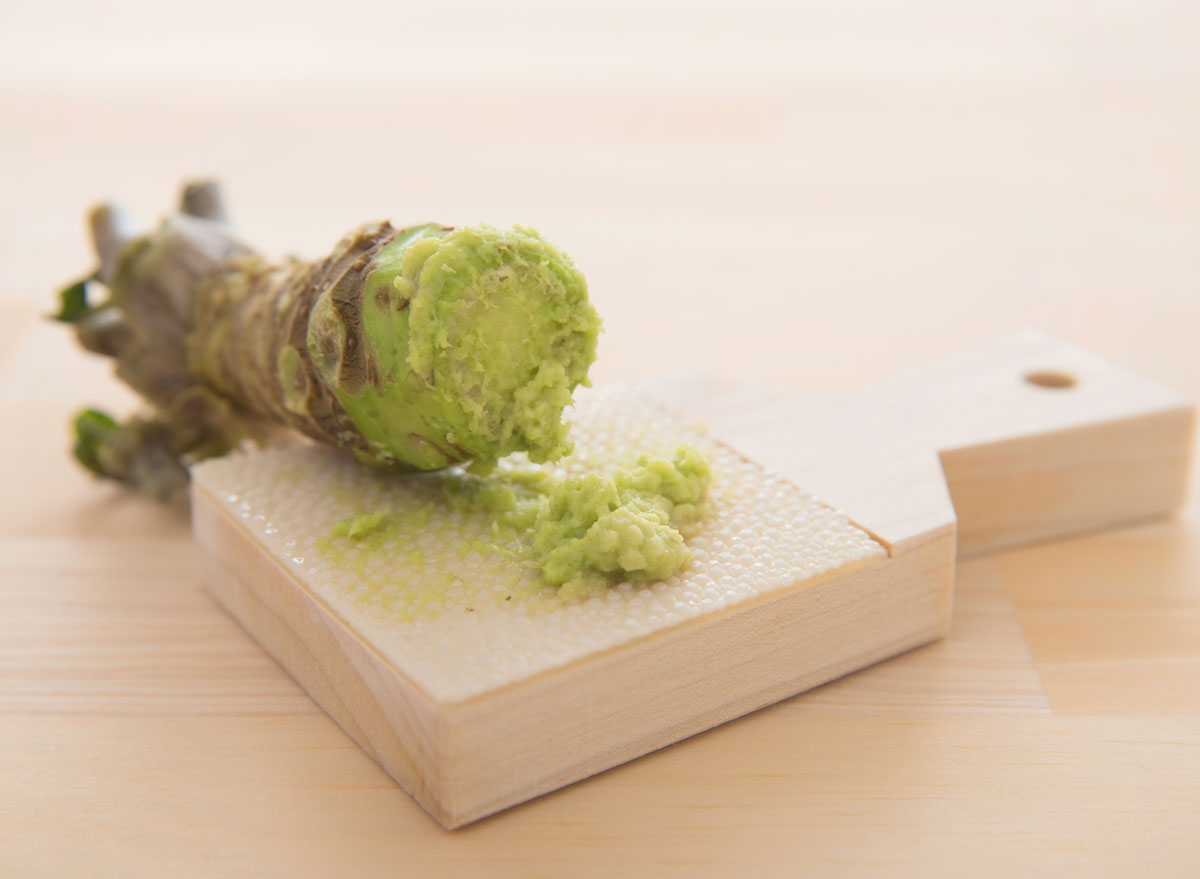
"Real wasabi or Japanese horseradish [scientifically known as Wasabia japonica, Cochlearia wasabi, or Eutrema japonica] is a root that grows on farms in Japan. Fresh wasabi paste is made by grating the wasabi rhizome, the subterranean stem of the plant," Bian tells us.
Once grated, the plant's volatile sulfur compound allyl isothiocyanate (AITC)—which gives the paste its signature bold kick—can lose its potency in as little as 15 minutes. The formation of AITC is triggered immediately upon grating the wasabi root very finely before a pungent compound present in wasabi (known as sinigrin) reacts with the enzyme myrosinase, Comprehensive Natural Products II states.
Why don't sushi restaurants use real wasabi—and what do they use instead?
So why does your local sashimi spot skip on serving the authentic condiment?
"Most sushi restaurants don't use real wasabi because it is very expensive (around $200 per kilogram), and it can be hard to find and purchase," Bian tells us, adding that real wasabi's lifetime is very short. "Most sushi restaurants use horseradish with green food coloring as wasabi. Not only does real wasabi taste better, but fresh wasabi has strong anti-bacterial agents and fights against some of the bacteria from raw fish. Real wasabi doesn't overpower fish, but pairs perfectly with high-quality raw fish," Bian says. The taste discrepancy is due to the presence of higher levels of the most volatile isothiocyanates in Japanese horseradish versus European horseradish that are released upon grating, a study in Food, Agriculture & Environment notes.
Are there any health benefits to eating faux wasabi, or should you skip it altogether?
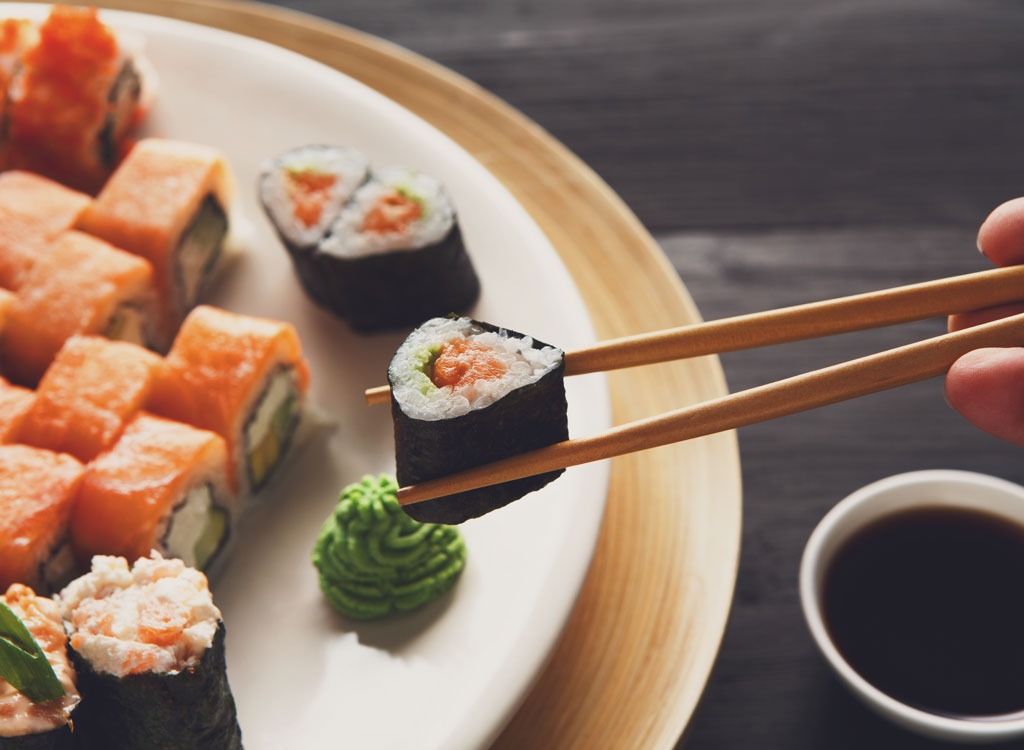
Now that you know how real wasabi differs from the pseudo paste they offer at your local sushi place, you may be wondering if you should even dip your chopstick into this fake food. Luckily, if you're a fan of the sinus-triggering tang, Feller tells us that it certainly shouldn't harm you if you don't have any sensitivities to the additives in the processed wasabi.
"Both real wasabi and real horseradish have some functional properties, including antioxidant and antimicrobial capabilities. It's worth noting that they come from the same family, Brassicaceae [which also includes kale, broccoli, cauliflower, and Brussels sprouts, among others]—think of them as cousins," Feller tells us. "Also, the health benefits are seen when they are consumed in their whole and minimally processed forms." In fact, a study in the journal BioFactors found that both wasabi and horseradish prevent the growth of food poisoning bacteria and fungi and can even deactivate a well-known carcinogen in broiled fish and meat—making both choices excellent sides to your raw fish dinner.
